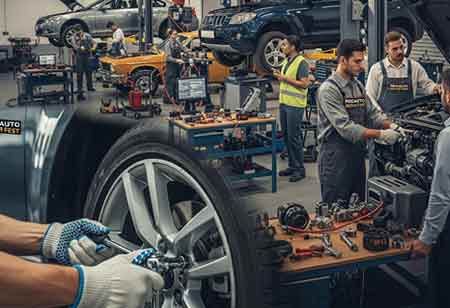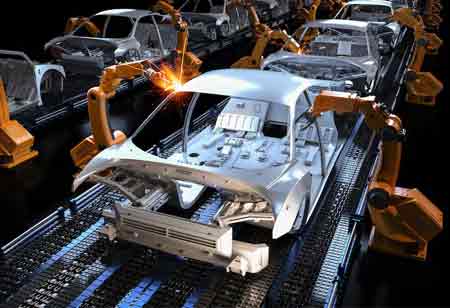Thank you for Subscribing to Auto Business Outlook Weekly Brief
Improving Efficiency with Automotive Repair Event Descriptions
Accurate automotive repair event descriptions support efficient service, customer transparency, and industry-wide communication through structured, standardized documentation integrated with modern diagnostic and reporting tools.

By
Auto Business Outlook | Friday, November 21, 2025
Stay ahead of the industry with exclusive feature stories on the top companies, expert insights and the latest news delivered straight to your inbox. Subscribe today.

Accurate communication plays a vital role in enhancing operational efficiency within the automotive service and maintenance industry. The repair event description serves as a detailed document behind the scenes that records the services performed, diagnoses made, and resolutions reached. While this may seem like a routine aspect of the process, these descriptions hold significant importance. They promote transparency and traceability in automotive repairs, ensuring quality from inspection through to final documentation. Therefore, clear and structured service descriptions are essential for bridging the gap between technicians, service advisors, vehicle owners, and manufacturers.
Functions and Importance of Clear Documentation
Well-structured automotive repair event descriptions provide a thorough account of the vehicle in question, outlining the circumstances surrounding the issue, the reasons for its occurrence, and the methods employed to resolve it. The description commences with the customer's concern, as documented in the service order, and encompasses technical diagnostics, examinations of the malfunctioning components, and the logical progression of steps taken throughout the repair process. Upon the vehicle's return, any formal exit checks that were mutually agreed upon would solidify the documentation entry. This record is subsequently linked to other matters, thereby serving as a valuable resource for warranty validation, comprehension of regulatory obligations, and tracking the vehicle's history.
Service activity descriptions play a pivotal role in fostering alignment within the repair team, allowing technicians and service advisors to address issues from a common framework. Inadequate descriptions may result in delays, repeated repairs, and customer dissatisfaction. Precise descriptions empower technicians to conduct more accurate diagnoses and repairs by identifying patterns and overlooked symptoms in prior event descriptions. This documentation is integral to quality control, as it captures data and observations regarding technology during the repair process, thus assisting service departments in evaluating performance, monitoring technician accuracy, and ensuring adherence to established procedures. Moreover, such documentation facilitates internal audits and inspections, particularly concerning the quality and safety of repairs. Consequently, repair event descriptions transcend mere administrative entries; they serve as essential instruments for delivering consistent and reliable service outcomes.
Technology Integration and Standardization Practices
The automobile repair business increasingly relies on digital solutions to manage operations. These systems provide a platform for rapid data entry and enforce structured formatting that enables greater uniformity and faster retrieval. By employing standardized templates for terminology and diagnostic codes, ambiguity is significantly reduced, and there is greater assurance that these descriptions meet the requirements of both internal and manufacturer standards. This mechanism of establishing a common identity is becoming more relevant for facilities with either high repair volume or multiple commercial locations, as in both cases, agreed consistency lends legitimacy and support to the functioning process.
A digital repair system uses voice transcription technology to enable technicians to rapidly and accurately dictate detailed entries on diagnostics and repairs. By enabling real-time documentation, such systems help narrow the time lag between the repair completion and the actual writing of the records. This aids in recording key actions and observations, thus enhancing the quality of the repair narrative and preserving corporate know-how. Digital repair descriptions are often integrated with diagnostic software and vehicle telematics to provide a rich, contextual, and accurate visual representation of the service event. With automated extraction of fault codes, real-time test data, and component history integrated into the description, this enhances internal efficiency and serves to better communicate with customers.
Customer Transparency and Industry Communication
This repair description is equally important in marketing to customers beyond the shop floor. When descriptions are clear and understandable for the customer, trust is built, especially with complex work or high repair prices. Customers appreciate transparency, where a well-documented account of the diagnosis and what has been done to resolve it keeps them informed and reassured. Such documentation also becomes a record that minimizes the risk of a dispute if the customer raises questions.
Such reports are built to give buyers a sense of resale value, confidence about the purchase, warranty issues, parts reliability, and key problem areas. Insurance companies rely on accurate repair documentation to pay claims and determine coverage. Quality documentation reflects the reputation and professionalism of a service facility. By all means, organizations run training programs to gain skills to develop sound, objective, and informative repair descriptions. An equally important part of technician training is learning to use factual language and relevant details without cluttering the message to meet the expectations of understandability of the records for the technician, the customer, insurance, and regulatory requirements.






